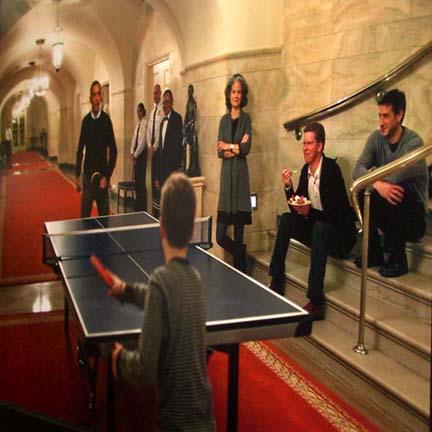February 4, 2011
The Myth of Nets & Edges Evening Out
I was thinking about this myth recently after losing *another* match on a series of nets and edges. To be specific, in the fifth game of a practice match, I was up 3-1, and my opponent got two edges in a row, and shortly after followed with another edge and two nets. I got zero nets or edges that game.
Many coaches and players say "it all events out," but it really doesn't. Certain styles get more nets and edges than others. Hitters and blockers (especially those with dead surfaces) tend to hit with a lower trajectory, and so they get more nets. They also tend to hit deeper on the table, since they don't have topspin pulling the ball down, and so get more back edges. Blockers who block at wide angles get more side edges. On the other hand, loopers hit with a higher trajectory, and their topspin tends to pull the ball down shorter, and so they get fewer nets and back edges. Steady, precise players also tend to get fewer nets and edges. So yeah, style matters. It doesn't even out.
Some would argue that the styles that get more nets & edges do so because they are playing more aggressively, i.e. hitting lower to the net and deeper, and going for wider angles. Well, of course. But then say that, and don't fill the air with the fictitious "it all evens out" mantra that many of us know simply isn't true.
Also, the "aggressive" argument isn't always true. For example, long-pipped blockers get hordes of net balls, and they don't do so from playing aggressively. I don't think anyone chooses a style because it'll give them more nets & edges.
World Rankings
- Read more about February 4, 2011
- 6 comments
- Log in or register to post comments






